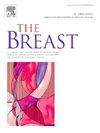Incidence and temporal patterns of true recurrences and second primaries in women with breast cancer: A 10-year competing risk-adjusted analysis
IF 5.7
2区 医学
Q1 OBSTETRICS & GYNECOLOGY
引用次数: 0
Abstract
Introduction
We report a population-based, competing risk-adjusted analysis of the risk and timing of true recurrences and second primaries in women with breast cancer (BC), that are still ill-defined.
Methods
We performed a manual review of medical charts of 1988 BC patients from a cancer registry in northern Italy (2000–2013). The occurrence and timing of true recurrences (TRs, including local, regional and distant recurrences) and second BCs (SBCs, including ipsilateral and contralateral SBC) during 10 years of follow-up were evaluated. The prognostic factors for TRs and SBCs were identified using the Fine and Gray model.
Results
The cumulative incidence was 13.7 % (95 % confidence interval (CI), 12.2–15.3 %) for TRs and 4.6 % (95 % CI, 3.7–5.7 %) for SBCs. The median time to detection varied between 3.4 (TRs) and 5.1 (SBCs) years. The risk of TRs had two peaks, one between the 2nd and the 3rd year of follow-up and another between the 7th and the 8th year. The subhazard of SBCs fluctuated for five years, had a drop between the 6th and the 7th year and a marked peak between the 8th and the 9th year. Prognostic factors for TRs (tumour stage and grade, lymph node status and residual disease) and SBCs (patient age and –inverse association– hormone therapy) were different. In the 9th-10th year of follow-up, the excess incidence of total BC episodes as compared with the expected incidence of BC was no longer significant (standardised incidence ratio, 1.15; 95 % CI, 0.86–1.53).
Conclusions
The multifaceted results of this study warrant further research into the risk and timing of all types of BC recurrence.

求助全文
约1分钟内获得全文
求助全文
来源期刊

Breast
医学-妇产科学
CiteScore
8.70
自引率
2.60%
发文量
165
审稿时长
59 days
期刊介绍:
The Breast is an international, multidisciplinary journal for researchers and clinicians, which focuses on translational and clinical research for the advancement of breast cancer prevention, diagnosis and treatment of all stages.
 求助内容:
求助内容: 应助结果提醒方式:
应助结果提醒方式:


